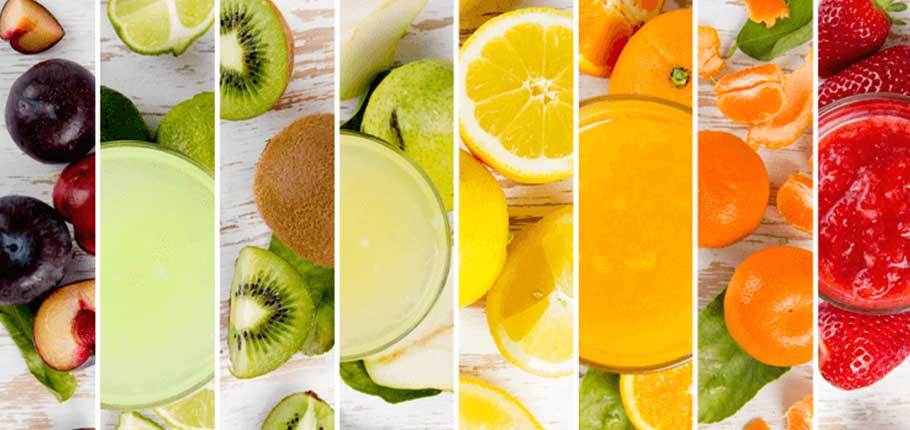Socioeconomic development, rising population, diseases, and the busy lifestyle of consumers globally have led to an improvement in food quality. Tastes and preferences now are tailored in order to match the palate of a particular region or country.
Nowadays, flavors are an integral part of the food industry and are widely used in our diet. They are processed or sourced either naturally or synthetically.
In the olden days when Egypt’s climate was not at all conducive for food storage, obviously due to hot weather, they started to look for ways to enhance the sustainability and usability life of food products. The common methods included the processing directly under the sun, adding salt, curing, corning, pickling, smoking (meat/fish), or burning down sulfur during the course of vegetable preservation. The earliest known preservatives include acetic acid which is produced naturally by fermentation of fruits and other foods spoils.
During the war era (early 17th century and 18th century) in the whole of Europe and/also the American Civil War, soldiers and seafarers had less access to properly cooked or fresh food. This led to the introduction of canned food with preservatives used to keep food fresh. Salt of harts horn was widely used in baking goods as a raising agent. Sodium hydroxide solution gained importance in producing salty sticks.
Throughout the nineteenth-century, we saw huge developments in biology, chemistry and medicines. A French scientist, Louis Pasteur, had in-depth knowledge of microbiology and he was able to prove the link between microorganisms and food spoilage. As a result, the race to discover natural compounds that prevented the growth of microbes began. The main aim still was food preservation and that was being achieved using naturally occurring acids and salts.
The beginning of twentieth-century was the turning point where the focus shifted from just consuming fresh and properly cooked food to processed foods with properties like flavors, colors, and sweeteners.
The primary aim behind using flavors can be to make food attractive, extend shelf life or freshness of food, prevent food quality damage, maintain texture, or decrease the cost of production.
Flavors are also added to prevent food spoilage and enhance sensorial features. The flavors can be natural or artificial that are added to food to enhance the flavor and maintain its freshness.
Exposure to oxygen can also cause loss of flavors in food. This process can be eliminated or slowed down by the use of certain antioxidants. They can be both natural or artificial. Synthetic antioxidants like esters are widely used. A few of the popularly used natural antioxidants are vitamin E, but the artificial antioxidants are stronger and more resistant to processing.
Providing sensorial delight and visual appeal has become very important and for this reason, food flavors and coloring come into play.
Apart from natural and artificial colors, sweeteners also play an important part in enhancing food taste. Food manufacturers commonly use sucrose that is derived from sugarcane and other natural sweeteners containing glucose-fructose, stevia and other alternatives. Sweeteners are widely used in juices, beverages, spirits, dairy products, chewing gum and sweets.
The most common flavors produced by flavour companies are:
- Vanillin Flavor: One of the principal components found in vanilla beans. This global flavor is one of the most expensive and complex to process from the plant. This is the only reason that manufacturers prefer synthetic vanillin. Vanillin is most commonly used in a variety of foods & beverages, such as baked goods, confectioneries, and soft drinks. Also popularly used in wines, vinegar and spirits. There are some foods that emit vanillin when they’re processed or heated and are an important part of the aroma of tortillas, oatmeal and warm coffee. Vanillin is also widely used as an additive in chocolate and ice cream worldwide and this constitutes about 75% of the total market place for the chemical.
- Butter Flavor: A natural offshoot of fermentation that imparts buttery aroma to foods and beverages. Most commonly used as artificial butter flavors like everybody’s favorite butter-flavored popcorn. Butter flavor is also known for its corny, sweet, creamy, melted and toasted variety and is popularly used in spread, bakery, sauce, dip, cookie and cracker applications. Also used in alcoholic beverages, (very low levels) which imparts a pleasant and mouth-feel experience.
- Banana Flavor: Banana flavor imparts a very distinctive and strong scent. This flavor is so intense that its taste can be recognized in lowest concentrations. Most commonly used in confectioneries, chewing gums and baked goods.
- Almond Flavor: Provides the pleasant aroma of almonds and thus is the most extensively used flavor in the food industry. It is used in most of the baked goods and chocolates.
- Cinnamon Flavor: It’s the reason behind the distinctive flavor of cinnamon. Regularly used in baked goods, cookies, desserts, confectioneries, candles (for scent), air fresheners and perfume.
- Grapes Flavor: Resembles the aroma of concord grapes. Mainly used in confectionery, beverages, and children’s medicines.
- Lemon Flavor: This flavor is found in surplus in the peels of citrus fruits and is responsible for that lovely aromatic lemony scent. It is obtained by peeling the fruits and that oil is then extracted and distilled for more strong aroma. Most commonly used in baked goods, beverages, ice creams, sherbets and gelatos and other applications.
- Pineapple Flavor: It is widely used in soft drinks and confectionery, baked goods, candy, nuts, ice cream, and drinks.
- Caramelized Flavor: An organic substance which contains the rich aroma of candyfloss or caramelized sugar. One of the most loved sweet and nutty flavors, it is used in ice-creams, candies, puddings and frostings and other applications.
All these flavors are unique and have their own characteristics and aroma. Most of the time, they are often used in conjunction to make aromatic flavors for a variety of foods and beverages.
Currently, food flavors are commonly used in the human diet, and it doesn’t really matter whether natural or artificial, most of them are non-invasive to our health. It’s up to the consumers to choose any foods products that may either contain very less amount of flavors or do not contain any such substances.






Wow! can say this post has got happiness.